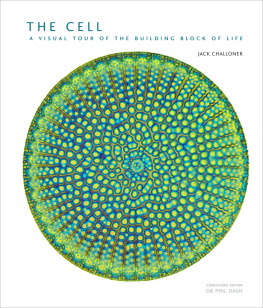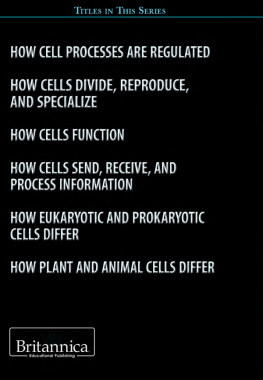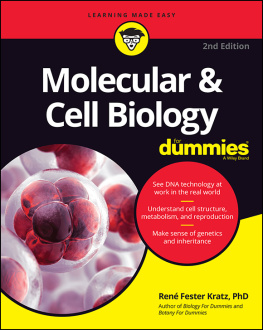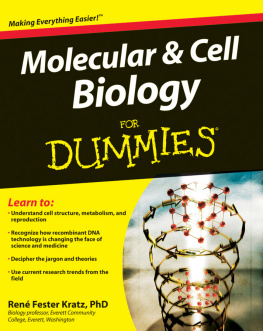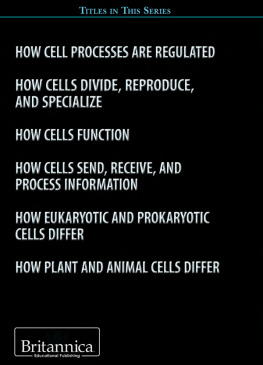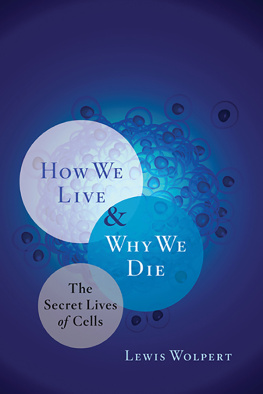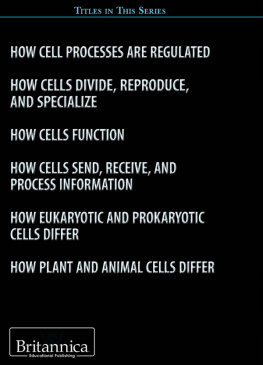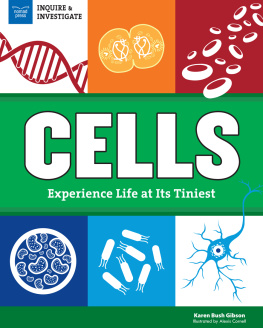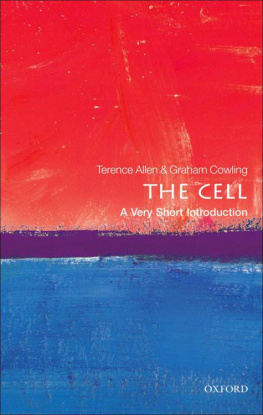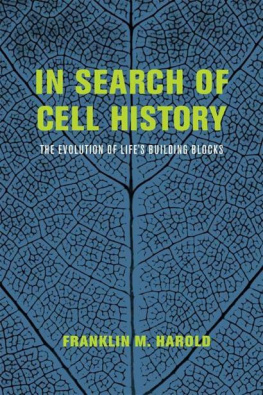THE CELL
A VISUAL TOUR OF THE BUILDING BLOCK OF LIFE
JACK CHALLONER

CONSULTANT EDITOR
DR PHIL DASH

The cell is the basic building block of life. In its 3.5 billion years on the planet, it has proven to be a powerhouse, spreading life first throughout the seas, then across land, developing the rich and complex diversity of life that populates the planet today.
With The Cell: A Visual Tour of the Building Blocks of Life, Jack Challoner treats readers to a visually stunning tour of these remarkable molecular machines. Most of the living things were familiar with are composed of billions or trillions of cells. Most multicellular organisms consist of many different types of cells, each highly specialized to play a particular role from building bones or producing the pigment in flower petals to fighting disease or sensing environmental cues. But the great majority of living things on our planet exist as single cells. These cellular singletons are every bit as successful and diverse as multicellular organisms, and our very existence relies on them. This book is an authoritative yet accessible account of what goes on inside every living cell and the importance of these chemical reactions both on the familiar everyday scale and on the global scale.
Along the way, Challoner sheds light on many of the most intriguing questions guiding current scientific research: what special properties make stem cells so promising in the treatment of injury and disease? How and when did single-celled organisms first come together to form multicellular ones? And how might scientists soon be prepared to build on the basic principles of cell biology to build similar living cells from scratch?
Contents
Why the cell is Earths greatest success story, and the basis of all life.
In the 350 years since cells were discovered remarkable progress has been made in our understanding of them.
All types of cell share certain characteristics, including the molecular machinery that makes them work.
The process of cell division accounts for growth and reproduction, as well as the evolution of new species.
The overwhelming majority of cells on Earth are individual living things single-celled organisms.
Cells cooperate within complex organisms and perform essential specialized tasks.
Cells have evolved extraordinary ways to attack other cells and to protect themselves.
The human body manufactures around 200 different cell types, displaying astonishing diversity and specialization.
Introduction

Two become one; light micrograph (a microscope photograph) of a single, fertilized human egg cell (ovum) soon before the first cell division.
Every person on this planet began life as one cell, about the same size as this period. Each one of us remained like this for about 24 hours before dividing in twothe first step toward creating the complex, multicellular organism that humans are today. It is an incredible and fascinating thought, that a human could have been contained in a single cell, and that, perhaps more remarkable still, that one basic unit of life knew what to do to next.
To understand just how important cells are, consider the following. The total number of living things currently inhabiting our planet is unimaginably large (there are an estimated 8.7 million unique species, most of them numbering millions, billions, or trillions of individuals), and every last one of them, without exception, is made of one or more cells. Next, consider the incredible variety of processes and materials that occur in the natural world. The glow of a firefly, a plant bending toward the light, cancer, a 100-meter sprint, wood, mucus, elephant dung, a blue whales skeleton, body odor, the memory of the smell of ratatouille, the call of a howler monkey, houseplants, a hawks beak, a snakes venom all of these are the result of activity in cells.
What is this life?
The difference between a living and a nonliving thing has always been difficult to define. Biologists generally agree that for something to be considered alive it must satisfy a set of criteria, including the use of energy to build complex molecules and organize its internal systems, and the ability to respond to its surroundings and to reproduce. Rhododendrons and ants satisfy all of these criteriabut only because they are made of cells, lifes building blocks. Cells are life, and to understand their behavior, their structure and their remarkable microscopic and submicroscopic machinery is to understand life itself. Chapter one outlines the history of that understanding (so far), and examines some of the tools and techniques that have nurtured it.

Anything at all in the living world, from a material to a process, happens because of activity in cells.
A cell is just a mixture of molecules, a cocktail of chemicals, inside a little bag. Despite the unambitious simplicity of that description, and the tiny size of a typical cell, truly intricate wonders lie within. This is the subject of chapter two, the inside view of cells, in which the main features are identified and the main types of cell are considered.
The cell is a bewilderingly busy molecular metropolis: some molecules are making copies of themselves; some are manufacturing other molecules; some are quickly reading information coded along the length of others; some are grabbing hold of others and carrying them to wherever they need to be next; some are self-assembling as a kind of molecular scaffolding or as tracks along which other molecules can be carried. All of this dizzying activity, and infinitely more, is taking place in every living cell on the planet every moment of every day. Two of the most important outcomes of this molecular dancegrowth and reproduction, via the proliferation of cellsform the subject of chapter three.
HOW STRANGE THE CHANGE FROM MICRO TO MACRO
Most cells are too small to be seen with the naked eye, but they are easily observed with light microscopes; they are microscopic. The smallest cells, tiny mycoplasma that live inside other cells, are under one thousandth of a millimeter (1 micron) in diameter, while the largest, such as bird eggs or nerve cells, are inches across. Most types of cell are typically between 5 and 10 microns across.

How big are cells?
Although most individual cells are far too small to see without serious magnification, there are some that are big enough. Bird eggs, for example, are single cells. The largest bird egg of a living species is laid by the ostrich, and ostrich eggs are, in fact, the largest of all cells. (The shell, incidentally, is not part of the cell but is manufactured by it.) There are millions of species that remain as single cells all their livesthe ostrich is not among them, of course. Among the largest of them is Valonia ventricosa, also known as bubble algae, which can grow to 2 inches (5 centimeters) in diameter. The variety and importance of these cellular singletons is revealed in chapter four.
The living things with which we are familiarthe ones we can actually seeare made of thousands, millions, billions, or trillions of cells. Nearly all multicellular organisms are either plants, fungi, or animals. In most cases the cells that make up these organisms all come from repeated cell divisions that start with one cellthat fertilized egg from which each of us derived, for exampledifferentiating into different types that form tissues, which in turn can form sophisticated specialized organs. (In others, a new individual may begin by buddingby no means a lesser feat.) The cells of a multicellular organism also produce substances that hold the individual together and compounds that enable intercellular communication. Chapter five looks at how this all works to build a robust, functioning body.
Next page
